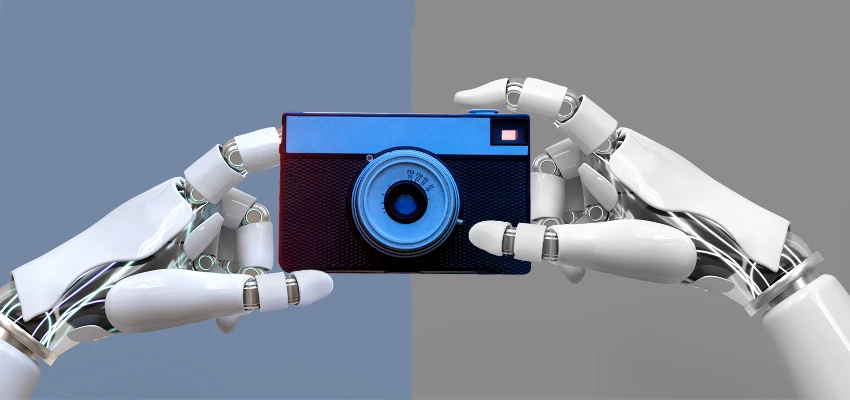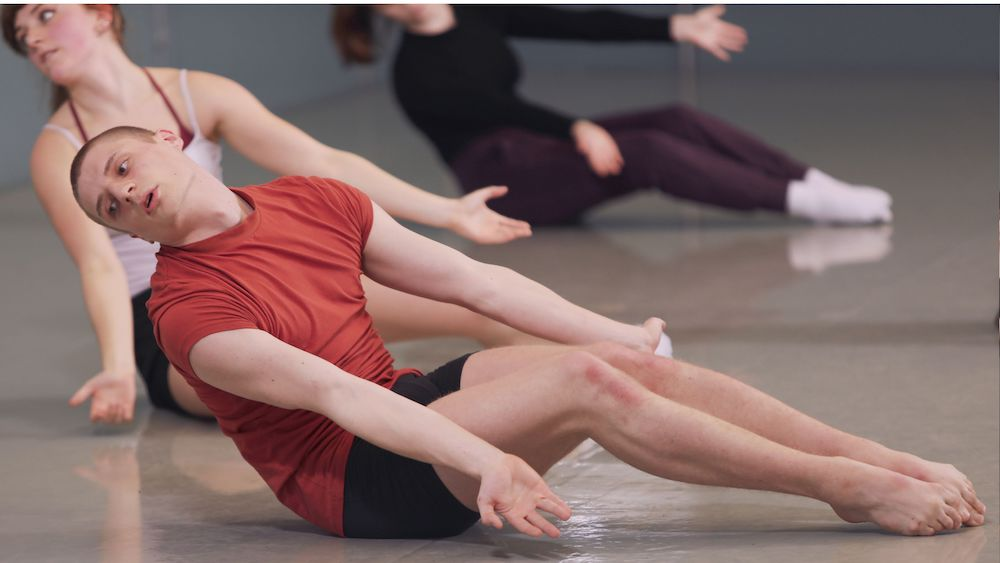AI in photojournalism is transforming the landscape of visual storytelling, merging the intricacies of artificial intelligence photography with age-old journalistic practices. As technology rapidly advances, it poses both threats and opportunities for the field, redefining how images capture and convey the truth. With pressing concerns surrounding the impact of AI on photography, professionals must adapt to protect their work, including the preservation of crucial photo archives. At the forefront of this evolution is Kira Pollack, who believes that by harnessing photojournalism technology, it’s possible to catalog and safeguard the vast imagery that tells our shared history. The future of journalism with AI may offer innovative solutions to challenges that have long plagued the industry, fostering creativity while maintaining trust in what is seen.
The integration of artificial intelligence into the realm of visual reporting is reshaping how we perceive and consume news images. Innovations in photojournalism tools could usher in an age of enhanced storytelling capabilities, enabling professionals to manage their extensive libraries and ensure the integrity of visual narratives. With the growing concerns over digital manipulation and copyright infringement, the conversation explores not only the preservation of legacy but also the ethical implications of AI-driven systems in documentary photography. As we look to the future, the collaborative potential between technology and journalism might illuminate pathways for safeguarding the authenticity of impactful images. This intersection of tech and tradition is crucial for the ongoing dialogue regarding the essence of visual memory and credibility.
AI in Photojournalism: A Double-Edged Sword
Artificial intelligence is rapidly transforming various industries, and photojournalism is no exception. On one hand, AI systems present unique challenges, such as the proliferation of deepfake images that can undermine public trust in visual storytelling. The ability of AI to create seemingly genuine photos without any human intervention poses a significant risk to the authenticity that photojournalism historically upholds. The fear is that audiences may begin to blur the lines between reality and fabrication, leading to skepticism about legitimate works and a potential erosion of the credibility of the trade.
On the other hand, as Kira Pollack emphasizes, AI also holds promise for the future of photojournalism. By leveraging AI technologies, photojournalists can streamline the management and preservation of their archives. These powerful tools can help organize vast collections of images, making them more accessible to both journalists and the public. The potential to analyze images for context and content can enhance the narrative depth of reported stories, allowing for a richer understanding of critical issues across the globe. Thus, AI stands at a crossroads, where it can be used to either hinder or elevate the standards of photojournalism.
Preserving Photo Archives: The Role of Technology
The preservation of photo archives is an urgent necessity, considering that many invaluable works of photojournalists remain unseen and unpublished. Pollack articulates that a staggering 95% of the images captured by professional photojournalists may not have ever received exposure. This raises the question: how can we ensure that these visual records of our history do not fade away? The Shorenstein fellowship aims to explore innovative solutions to safeguard these archives, employing AI tools capable of cataloging and organizing these complex repositories of human experience.
The marriage of photojournalism technology with artificial intelligence can revolutionize how archives are maintained and understood. By utilizing machine learning algorithms, organizations can better determine the historical relevance of imagery, thereby making pertinent photographs more discoverable. Additionally, AI can unlock layers of meaning in images that simple tags cannot capture. Such advancements would not only preserve the past but also contextualize it effectively, allowing future generations to understand the sentiments and emotions behind each shot, reinforcing the power of photography as a medium for storytelling.
The Impact of AI on Photography: Challenges and Opportunities
As AI continues to evolve, its impact on photography becomes more evident, alerting both enthusiasts and professionals to impending changes. One significant challenge is the ethical use of photographers’ work to train AI systems. Unauthorized use not only raises concerns about copyright infringement but also questions who truly owns the image— the creator or the technology that reinterprets it. Addressing these challenges is crucial for protecting photographers’ rights while still navigating the advantages that AI presents.
Conversely, embracing AI could bring newfound opportunities to the industry. For instance, AI-driven tools can assist photographers in editing, enhancing, and curating their work, enabling them to focus more on their creative processes rather than arduous technical details. Additionally, by streamlining workflows and automating repetitive tasks, AI allows for greater efficiency that can help photographers adapt to the fast-paced news cycle. While navigating the complexities of AI in photography, those in the industry must focus on harnessing its benefits while still upholding the integrity and ethical standards that define photojournalism.
The Future of Journalism with AI: A Collaborative Approach
As journalism adapts to the presence of AI, a thoughtful and collaborative approach is vital for shaping its future. Pollack’s initiative at the Shorenstein Center illustrates the need for interdisciplinary dialogue that includes technologists and ethicists. The complexities of integrating AI into journalism demand a comprehensive understanding of technology and its socio-cultural impacts. Engaging in conversations across varied fields can create a holistic framework that recognizes the role of AI as a tool for storytelling rather than a replacement for human insight.
Moreover, collaboration among journalists, technologists, and policymakers can lead to the establishment of guidelines that foster responsible use of AI. By defining clear ethical parameters, the industry can navigate potential pitfalls while capitalizing on technology’s benefits. As AI continues to shape storytelling within journalism, a collective commitment to truthfulness, transparency, and respect for photographic authorship will guide the responsible integration of these technologies into the future of journalism.
Ethical Considerations: Navigating AI’s Influence on Visual Storytelling
Navigating the integration of AI into photojournalism raises significant ethical considerations that require careful scrutiny. The power to manipulate images through AI can lead to misrepresentation, particularly in sensitive contexts where authenticity is paramount. The challenge lies in creating boundaries that protect the integrity of visual storytelling while still utilizing the technology’s advantages. Ethical frameworks must be established to ensure that AI is applied as a supportive tool rather than a means to compromise truth.
The photojournalism community must advocate for practices that promote transparency about the use of AI in image production and curation. Establishing clear guidelines can help alleviate concerns surrounding unauthorized usage and the exploitation of photographers’ work. Engaging with audiences about how AI is employed in journalism can bolster trust and reinforce the photographer’s role as the originator of visual narratives. Therefore, fostering ethical practices becomes paramount in achieving a balance between technological innovation and the principles of truthful storytelling.
Exploring the Potential of AI for Image Analysis and Contextualization
AI’s robust capabilities in image analysis and contextualization offer groundbreaking potential for photojournalism. As demonstrated in Kira Pollack’s studies, AI can discern intricate details within photographs, providing insights regarding both composition and emotional impact. This level of granular analysis allows photojournalists to enhance their storytelling by embedding richer narratives into their work. By leveraging AI, professionals can reveal the nuances of complex situations—essentially allowing for a deeper connection between the image and the audience.
Additionally, using AI for contextualization not only aids in understanding the content but also increases the visibility of often-overlooked histories captured in archives. As AI systems analyze and mark images, they facilitate a new way to engage with visual records; these technologies can illuminate lesser-known stories by contextualizing them within broader historical frameworks. This capacity to surface hidden gems buried in photo archives could transform public narratives, further reinforcing the significance of robust photojournalism in society.
The Necessity of Collaboration Between Technologists and Journalists
To harness the potential of AI technology in photojournalism effectively, a cooperative model between technologists and journalists is essential. Journalists bring critical insights regarding the portrayal of truth, ethics, and the nuanced interpretation of images, while technologists provide expertise in leveraging AI tools to achieve these goals. By working together, both parties can contribute to developing solutions that not only enhance workflow but also prioritize maintaining journalistic integrity.
Such collaboration fosters an environment where innovation and ethical practices coalesce, allowing for more robust methodologies in preserving photo archives and advancing storytelling techniques. As noted in Pollack’s research at the Shorenstein Center, interdisciplinary dialogues can provide frameworks that help navigate the uncertainties of AI in journalism, ensuring that future developments align with core journalistic standards and values.
The Role of AI in Crafting Immersive Visual Experiences
Emerging technologies, particularly AI, hold immense promise in creating more immersive visual experiences for audiences. Pollack’s exploration of AI tools reveals their potential to deepen the narrative quality of photojournalism by enabling audiences to engage with images on multiple levels. These advancements can help frame the story effectively, ensuring that the viewer receives a comprehensive understanding of complex issues, which is essential in today’s rapid news landscape.
Furthermore, utilizing AI to enhance engagement with visual narratives can help uphold the importance of photojournalism as a means of provoking thought and discussion. AI-driven platforms can curate images in ways that resonate with audiences, sparking conversations around social justice, politics, and human rights. By broadening the ways audiences interact with visual narratives, AI is not merely transforming image consumption but is enriching the overall impact of photojournalism.
Analyzing the Artistic and Technical Merits of AI in Photography
The interplay between artistry and technology can lead to fascinating developments in the field of photography, particularly with advancements in AI tools. As Kira Pollack highlights in her research, understanding how these technologies intersect with the craft of photography is crucial for navigating the industry’s future. AI is capable of amplifying artistic expression, allowing photographers to experiment with new techniques and styles while also meeting the demands of a fast-paced news environment.
However, it’s vital to critically analyze the balance between creativity and authenticity that AI introduces. While technology can enhance technical aspects of photography, professionals must remain vigilant to ensure that the essence of the craft is not lost. The artistic merit of a photograph should remain tied to the photographer’s vision, intent, and narrative objectives, rather than being predominantly dictated by AI-generated analysis or modification. Thus, maintaining the purity of artistic expression amid technological innovation will be a pivotal challenge for the future of photography.
Frequently Asked Questions
How is AI impacting photojournalism today?
AI is significantly impacting photojournalism by introducing both challenges and opportunities. On one side, generative AI creates realistic images without actual events, which raises concerns about the authenticity of visual storytelling. Conversely, AI can also aid photojournalists by enhancing archival preservation, organization, and making previously unseen images accessible, thereby maintaining a rich historical record.
What role does artificial intelligence photography play in preserving photo archives?
Artificial intelligence photography plays a crucial role in preserving photo archives by automating the cataloging process, allowing for efficient organization of vast image collections. AI can help identify, analyze, and contextualize imagery from archives, ensuring that the important visual histories captured by photojournalists are maintained and accessible for future generations.
Can AI technology enhance the quality of journalism through photojournalism?
Yes, AI technology can enhance the quality of journalism by providing deeper insights into images through advanced analysis. By interpreting the nuances of complex scenes, AI can assist photojournalists in better storytelling, ensuring that the emotional and contextual layers of their work are highlighted, ultimately improving journalistic integrity.
What are the ethical concerns around the use of AI in photojournalism?
The ethical concerns around the use of AI in photojournalism primarily revolve around copyright issues and the potential manipulation of images. The risk of unauthorized use of photographer’s work for AI training, as well as the creation of misleading photorealistic images, complicates issues of ownership and trust within the field. Addressing these concerns requires careful consideration of rights and ethical usage of AI technologies.
How can AI help address the challenges faced by photojournalism today?
AI can address several challenges faced by photojournalism, including the preservation of image archives that contain critical historical records. By enabling better organization and accessibility of these archives, AI can help secure the visual narratives created by photojournalists, ensuring that these stories are not lost as technology and society evolve.
What future does AI in photojournalism hold?
The future of AI in photojournalism holds the potential for transformative advancements in how images are curated and consumed. As AI technology matures, it will likely play a pivotal role in enhancing storytelling through improved analytics and access, while also raising ongoing debates about authenticity and ethical boundaries that must be navigated carefully.
| Key Point | Description |
|---|---|
| AI’s Threat to Photojournalism | Artificial intelligence poses risks, including copyright breaches and the creation of synthetic images that could undermine trust in visual media. |
| Kira Pollack’s Vision | Kira Pollack believes AI could be harnessed to protect and preserve photojournalists’ archives, helping maintain the integrity of visual truth in journalism. |
| Current Research Focus | Pollack’s research at the Shorenstein Center examines how AI can catalog and contextualize vast archives of photography to keep these records accessible and relevant. |
| Understanding AI’s Role | Pollack emphasizes the importance of understanding AI’s capabilities and limitations in the realm of photography to protect authorship and preserve visual culture. |
| Ethical Considerations | The initiative seeks to address concerns about ownership and ethical use of images, ensuring that AI aids in safeguarding rather than exploiting visual content. |
Summary
AI in photojournalism is both a challenge and an opportunity. Kira Pollack asserts that while artificial intelligence poses real threats to the authenticity of photography, it also offers innovative ways to safeguard the visual records of our history. Through her research, she aims to explore how AI technologies can help preserve the invaluable archives of photojournalists, ensuring that the core values of truth, authorship, and memory remain intact in an increasingly digitized world. Embracing this duality of AI’s potential may help the field navigate disruptions while reinforcing trust in visual narrative.



